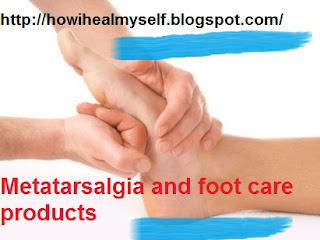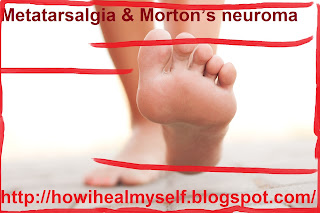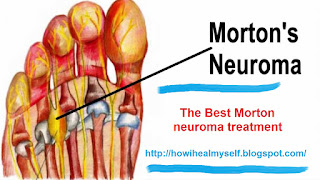5 Tips lose weight BEFORE the Holidays
http://bit.ly/fatlosslink
In case you're searching for some occasion fat misfortune tips, it's essential that you take an entire way of life way to deal with your reasoning examples, understanding that it's not simply going to matter what you do particularly in the exercise center, however it will have a major effect what you do over the whole course of the day.
By taking a way of life approach and taking a gander at a couple savvy changes that can be made so you keep that occasion weight pick up that happens to so a significant number of us, you can move into the New Year without the determination to shed 10 pounds.
How about we examine what you ought to know.
Sliced Your Workouts Down the middle
The main thing that you might need to consider doing is slicing your workouts down the middle. Since it will be occupied this season of year, on the off chance that you anticipate that yourself will go into the rec center for 60 minutes every day, there will be a much higher chance that you skip it totally.
Rather, cut your workout fifty-fifty. In the event that you used to do five arrangements of seat press, do three. On the off chance that you used to do four arrangements of jumps, attempt two.
On the off chance that you keep up the force, slicing your workout down the middle for a couple of weeks won't have any negative effect on your wellness level.
Concentrate On Active Winter Activities
Second, the following thing that you ought to consider doing is making a point to concentrate on dynamic winter exercises. This implies instead of lounging around watching films or going to, get up and get dynamic. Go out tobogganing, snow shoeing, or skating.
This is an extraordinary approach to take in the season and quickly smolder off calories while you do it.
Keep Your Meals Protein Focused
Third, our next occasion fat misfortune tip is subsequent to there is a decent risk that you will enjoy eventually as you go about the Christmas season, to make space for these extra calories, you ought to mean to keep the dinners that you do eat more protein based.
By removing a significant part of the complex carbs and included fats yet keeping the one supplement that you completely require - protein, you'll set aside your calories to spend later on.
This can truly go far towards offering you some assistance with maintaining great calorie adjust and keeping fat addition from occurring.
Be Careful With Your Beverages
Taking a gander at the drinks you take in, you'll need to be additional cautious here also. Egg nog, the conventional beverage of the season can without much of a stretch pack in 400-600 calories on the off chance that you down an extensive glass and this will truly include.
In like manner, all the occasional alcoholic mixed drinks and punch will contain extremely numerous calories to drink routinely, so pick to just have these on extraordinary events.
Just Indulge In Seasonal Foods
At long last, the last occasion fat misfortune tip to recollect is that you ought to just be permitting yourself to enjoy nourishments that you can just get this season of year. By doing as such you'll keep the aggregate calorie admission over your support level lower, hence anticipating an excess of fat addition.
It's normal that you will eat a couple of the occasional treats that course around, yet in the event that you're additionally eating fatty, high-fat sustenances that you can get at whatever time of the year, for example, consistent chocolate or nuts, then you're truly in for a few difficult issues.
Pick one treat every social capacity you go to that is regular that you truly need to have. This will keep you from feeling excessively limited and offer you some assistance with maintaining your waistline.
So there you have the top occasion fat misfortune tips to remember. In the event that you are certain to comply with these standards this Christmas season, you ought to both have a good time and stay incline in the meantime.
http://bit.ly/fatlosslink
In case you're searching for some occasion fat misfortune tips, it's essential that you take an entire way of life way to deal with your reasoning examples, understanding that it's not simply going to matter what you do particularly in the exercise center, however it will have a major effect what you do over the whole course of the day.
By taking a way of life approach and taking a gander at a couple savvy changes that can be made so you keep that occasion weight pick up that happens to so a significant number of us, you can move into the New Year without the determination to shed 10 pounds.
How about we examine what you ought to know.
Sliced Your Workouts Down the middle
The main thing that you might need to consider doing is slicing your workouts down the middle. Since it will be occupied this season of year, on the off chance that you anticipate that yourself will go into the rec center for 60 minutes every day, there will be a much higher chance that you skip it totally.
Rather, cut your workout fifty-fifty. In the event that you used to do five arrangements of seat press, do three. On the off chance that you used to do four arrangements of jumps, attempt two.
On the off chance that you keep up the force, slicing your workout down the middle for a couple of weeks won't have any negative effect on your wellness level.
Concentrate On Active Winter Activities
Second, the following thing that you ought to consider doing is making a point to concentrate on dynamic winter exercises. This implies instead of lounging around watching films or going to, get up and get dynamic. Go out tobogganing, snow shoeing, or skating.
This is an extraordinary approach to take in the season and quickly smolder off calories while you do it.
Keep Your Meals Protein Focused
Third, our next occasion fat misfortune tip is subsequent to there is a decent risk that you will enjoy eventually as you go about the Christmas season, to make space for these extra calories, you ought to mean to keep the dinners that you do eat more protein based.
By removing a significant part of the complex carbs and included fats yet keeping the one supplement that you completely require - protein, you'll set aside your calories to spend later on.
This can truly go far towards offering you some assistance with maintaining great calorie adjust and keeping fat addition from occurring.
Be Careful With Your Beverages
Taking a gander at the drinks you take in, you'll need to be additional cautious here also. Egg nog, the conventional beverage of the season can without much of a stretch pack in 400-600 calories on the off chance that you down an extensive glass and this will truly include.
In like manner, all the occasional alcoholic mixed drinks and punch will contain extremely numerous calories to drink routinely, so pick to just have these on extraordinary events.
Just Indulge In Seasonal Foods
At long last, the last occasion fat misfortune tip to recollect is that you ought to just be permitting yourself to enjoy nourishments that you can just get this season of year. By doing as such you'll keep the aggregate calorie admission over your support level lower, hence anticipating an excess of fat addition.
It's normal that you will eat a couple of the occasional treats that course around, yet in the event that you're additionally eating fatty, high-fat sustenances that you can get at whatever time of the year, for example, consistent chocolate or nuts, then you're truly in for a few difficult issues.
Pick one treat every social capacity you go to that is regular that you truly need to have. This will keep you from feeling excessively limited and offer you some assistance with maintaining your waistline.
So there you have the top occasion fat misfortune tips to remember. In the event that you are certain to comply with these standards this Christmas season, you ought to both have a good time and stay incline in the meantime.










